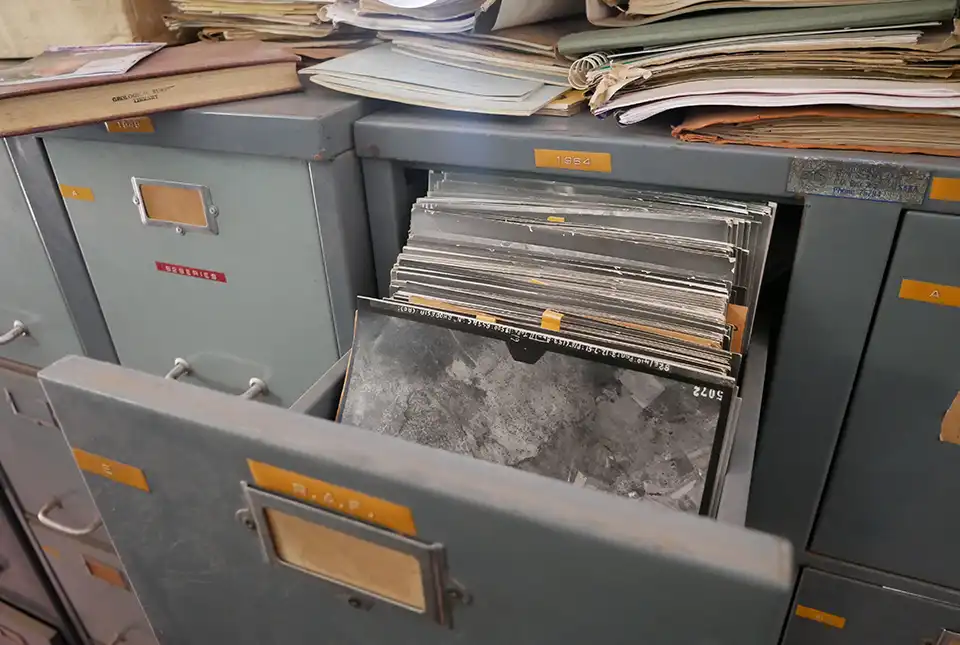In a world of rapidly developing technology, paper archives can often be overlooked as a vital first step in information gathering. Whilst custodians, librarians and records staff take great care in the arrangement and management of such archives, there is also an ongoing as ‘dusty’ and ‘forgotten about’. However, despite our best efforts, all archives can use a little TLC sometimes. Throw a subtropical climate and creepy crawlies into the mix and things can get very dusty! This was something I found out during a recent trip to the Zambian Geological Survey Department (GSD) in January 2024.
Our work in the archives
I travelled to Lusaka, along with BGS’s geo-information ingestion team coordinator Wayne Newham and minerals resource and security flows team leader Joseph Mankelow. as part of a project funded by the Foreign, Commonwealth & Development Office (FCDO) that aims to assist with the promotion of the critical mineral potential of Zambia. An important component of the project is to identify existing information on the mineral resources of Zambia available from the GSD, which can be used to understand the occurrence in the country of minerals required for the clean energy transition. A foundational step in building this capacity is the appraisal and organisation of the survey’s physical data, which was the focus of our trip.
On arrival at the GSD, we met with the library and records staff and learnt more about the status of the archive. Together, we identified the most effective method for organising the paper records. Although the GSD holds a wealth of geoscientific data, including maps and aerial photographs, the focus of our visit was on mineral exploration reports dating from the 1920s to the present day. All we needed was a quick sweep, mop and to dust away some of the cobwebs and we were ready to go.
Over the next two-and-a-half weeks, we populated a digital index, which captured vital metadata for each report and recorded its physical location in the archive. By creating this searchable index, GSD staff will have a fuller picture of the data they hold and library and record staff can now respond to enquiries from external stakeholders more promptly, enhancing their reputation as an authoritative repository of minerals information.
Downtime in Zambia
In the time not spent working at the GSD, we took the opportunity to sample the local cuisine including chikanda, a Zambian dish made from boiled root tubers; nshima, a maize flour porridge, and impwa (‘garden eggs’ in English), a vegetable similar to aubergine. We were also lucky enough to be in the country during the African Cup of Nations Football League (AFCON CUP 2024) and evenings were spent cheering on the national team with the passionate locals. Despite the fact Zambia didn’t make it past the group stages, nothing could dampen the fans’ spirits and goals were celebrated with much dancing and jubilation. I found out this positive and friendly attitude is ubiquitous throughout this welcoming south-central African country.
What’s next
The project team will return to Lusaka in February 2024 to continue the archive work and to hold a workshop that will bring together representatives from GSD, the Ministry of Mining and Minerals Development, and the ineral exploration sector to facilitate discussion on the potential for long-term critical raw minerals supply from Zambia.



